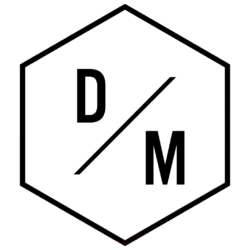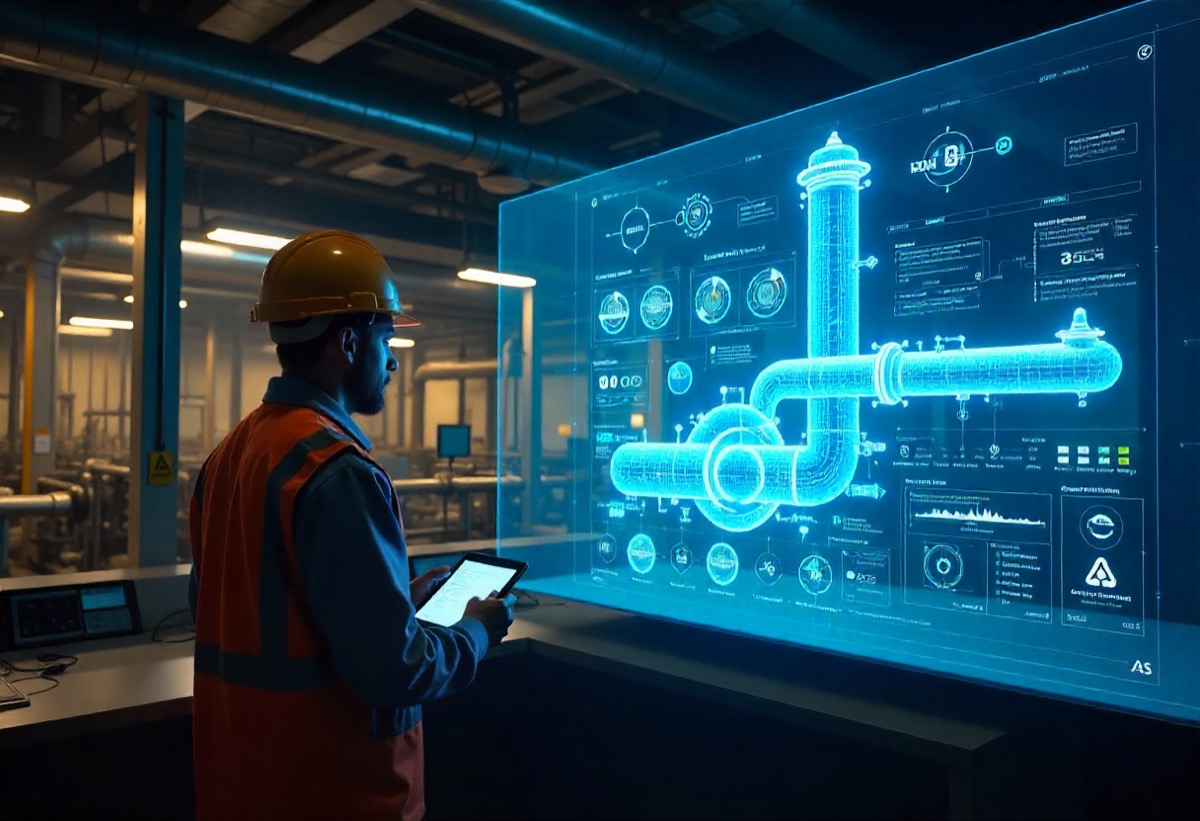Transform legacy plants without perfect 3D models. Get the proven 7-phase strategy that cuts maintenance costs 40% and eliminates downtime.
If your plant still runs on the legacy infrastructure and you are looking for oil and gas industry software upgrades, you might’ve come across the digital twins concept.
Digital twins of brownfield plants are virtual models replicating the physical systems and assets of the actual plants. These twins continuously reflect real-world conditions using data from sensors, operational analytics, and historical information.
Your legacy plant doesn’t need perfect 3D models to start digital transformation, though. These proven strategies turn messy brownfield data into profitable digital twins without breaking the bank.
Why Brownfield Plants Need Digital Twins More Than New Facilities
Industrial plants built decades ago operate on outdated drawings and veteran engineer memories. When key personnel retire, critical knowledge walks out the door. Meanwhile, maintenance costs spiral and unplanned downtime devastates production schedules.
The hidden costs of operating without digital twins:
| Problem | Annual Impact | Real Example |
| Unplanned downtime | $50K-300K per hour | Refinery saved $750,000 avoiding unplanned outage |
| Manual permit processes | 40% longer turnarounds | Reduced permit-to-work preparation time |
| Scattered documentation | 60% more troubleshooting time | Multiple system searches to confirm site conditions |
| Knowledge loss | 30% skill gap when experts retire | Tribal knowledge becomes institutional risk |
Digital twins solve these problems by creating a single source of truth that combines drawings, sensor data, and operational procedures.
What Makes a Digital Twin So Efficient
A digital twin is a virtual model that collects real-time data from sensors and can send control signals back to physical assets.
True digital twins provide bidirectional communication. They can simulate scenarios, predict failures, and even control equipment remotely.
Essential digital twin components:
- Real-time sensor data integration from existing equipment;
- 3D spatial models (doesn’t require perfect CAD files);
- Historical performance data and maintenance records;
- Predictive analytics algorithms for failure forecasting;
- Integration with existing business systems (ERP, CMMS, safety systems).
The key insight: Solutions exist for generating CAD model data by capturing image data and stitching it together, without requiring existing 3D images or laser scans.
Three Myths That Stop Brownfield Digital Twin Projects
Myth 1: You Need Perfect 3D Models to Start
Reality: You can begin by capturing photos or videos and stitching them into simple models. LiDAR scanning adds precision later when needed. Many successful projects start with smartphone photos and basic sketches. Professional scanning comes after proving value.
Myth 2: Legacy Data Is Too Messy to Digitize
Reality: Digital twins surface discrepancies between as-built drawings, CAD models, and P&IDs. Teams discover mismatches and fix them during implementation. The digitization process indeed improves data quality by revealing inconsistencies that have existed for years.
Myth 3: Implementation Costs Are Prohibitive
Reality: Initial implementation costs range from $500,000 to $2 million. Yet, phased approaches reduce financial strain. Smart operators start with critical assets and scale based on demonstrated ROI.
Seven-Phase Brownfield Implementation Strategy
Phase 1: Objective Clarity (Weeks 1-2)
Choose 3-4 high-value use cases before building anything. Focus on problems like predictive maintenance and permit-to-work optimization.
Common high-ROI starting points:
- Critical rotating equipment monitoring;
- Maintenance planning optimization;
- Safety permit workflow improvement;
- Turnaround planning enhancement.
Phase 2: Data Assessment and Preparation (Weeks 3-6)
Catalog existing information sources and document gaps. Most brownfield implementations involve decades of information in unintelligent and unstructured formats.
Data inventory checklist:
- P&ID drawings (often outdated but still valuable);
- As-built documentation (frequently incomplete);
- Maintenance records and work orders;
- Sensor data streams from existing systems;
- Historical incident and failure reports.
Phase 3: Geometry Capture (Weeks 7-10)
Start with simple visual documentation methods. For old equipment, add IoT sensors that connect to industrial networks. Use laser scanning and geotags to ensure twins match real-world systems.
Geometry capture approach:
- Begin with comprehensive photo documentation;
- Create basic 3D models using photogrammetry software;
- Add laser scanning for critical areas requiring precision;
- Integrate equipment nameplate data and specifications.
Phase 4: Sensor Integration and Data Streams (Weeks 11-16)
Outfit existing infrastructure with smart sensors that run on batteries lasting years, greatly simplifying installation requirements.
Sensor deployment strategy:
- Vibration sensors for rotating equipment;
- Temperature and pressure monitoring for critical processes;
- Flow measurement for key production streams;
- Electrical monitoring for motor-driven equipment.
Phase 5: Platform Development and Integration (Weeks 17-24)
Build the minimum viable digital twin that demonstrates clear value. Digital twins integrate with enterprise tools such as asset performance management, product lifecycle management, and ERP systems.
Integration priorities:
- Existing CMMS for maintenance workflow;
- Historian systems for process data;
- Safety management systems for permit workflows;
- ERP systems for work order management.
Phase 6: Pilot Testing and Validation (Weeks 25-32)
Deploy for chosen use cases and gather performance data. A global automotive plant achieved 30% maintenance cost reduction and 40% equipment uptime improvement through integrated predictive analytics.
Pilot success metrics:
- Reduction in unplanned downtime events;
- Faster maintenance planning and execution;
- Improved safety permit processing times;
- Enhanced troubleshooting accuracy.
Phase 7: Scaling and Continuous Improvement (Ongoing)
Expand to additional assets based on proven ROI. SMEs can apply digital twins to single processes and gradually extend to others.
Scaling framework:
- Add new equipment based on criticality and failure impact.
- Integrate additional data sources as they become available.
- Enhance predictive algorithms with more historical data.
- Train additional staff on digital twin workflows.
Real Results from Brownfield Digital Twin Projects
Let’s take a quick look at two case studies.
- North American energy infrastructure company: Struggled to keep as-built models current and required site visits to confirm conditions. After implementing VEERUM digital twin platform, teams could visualize existing 2D and 3D data in collaborative viewer.
- Chemical manufacturer case study: Saved $2 million annually through decreased equipment failures and lower overtime costs after digital twin implementation.
These results show consistent patterns: 20-40% maintenance cost reduction, 30-50% improvement in planning efficiency, and significant safety improvements.
Common Implementation Mistakes and How to Avoid Them
- Trying to digitize everything at once. Adopt phased approaches starting with prototypes for critical assets and scaling strategically.
- Expecting immediate perfection. Electronic Management of Change processes ensure digital twins remain current and evergreen.
- Ignoring cybersecurity from the start. Operational technology and industrial control systems require inventory management, vulnerability identification, and configuration management.
- Underestimating change management needs. Successful implementation requires structured change management to align people, processes, and culture.
Technology Solutions for Brownfield Assets
- Low-barrier IoT sensors: Hardware and software with low barriers in terms of costs and required skills.
- Cloud-based platforms: Enable remote access without major infrastructure upgrades.
- AI-powered data extraction: New AI tools automate information extraction from title blocks, reference tags, and build navigational hotspots.
- Mobile-friendly interfaces: Allow field workers to access digital twins on tablets and smartphones.
On a Final Note
Stop waiting for perfect data or complete documentation. Brownfield plants with decades of operational history often have more valuable information than they realize.
Start by identifying your three biggest operational pain points. Choose problems where better information access would immediately improve outcomes.
Don’t try to make your brownfield plant a greenfield facility to benefit from digital transformation. Start with what you have and build systematically toward what you need.


